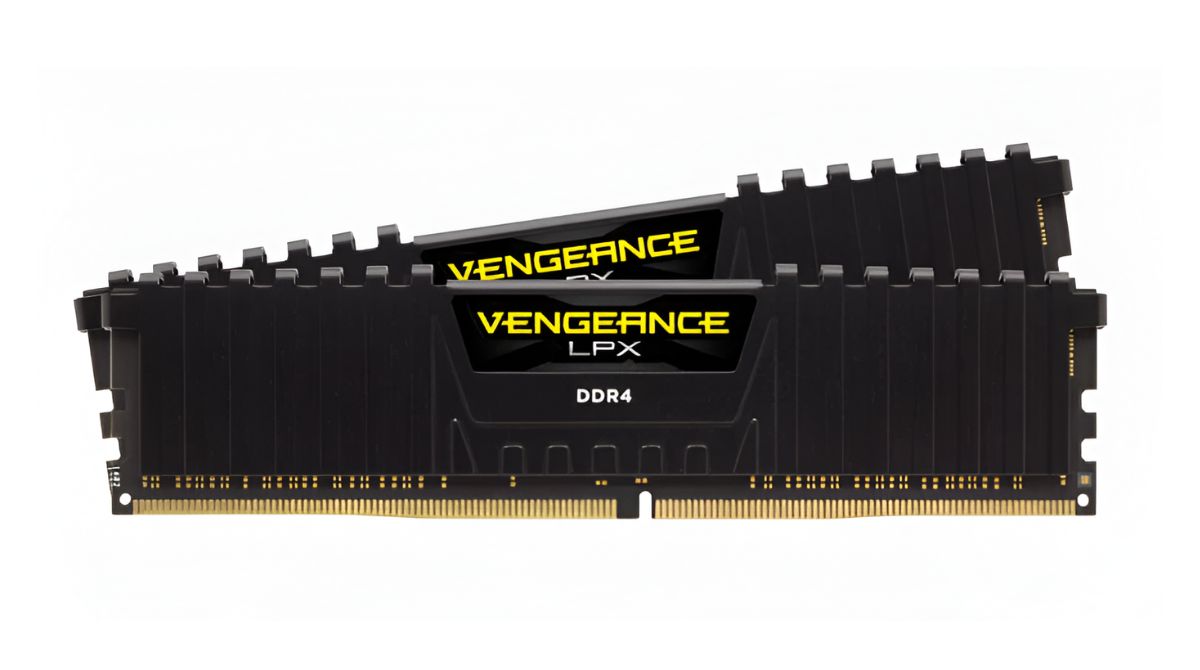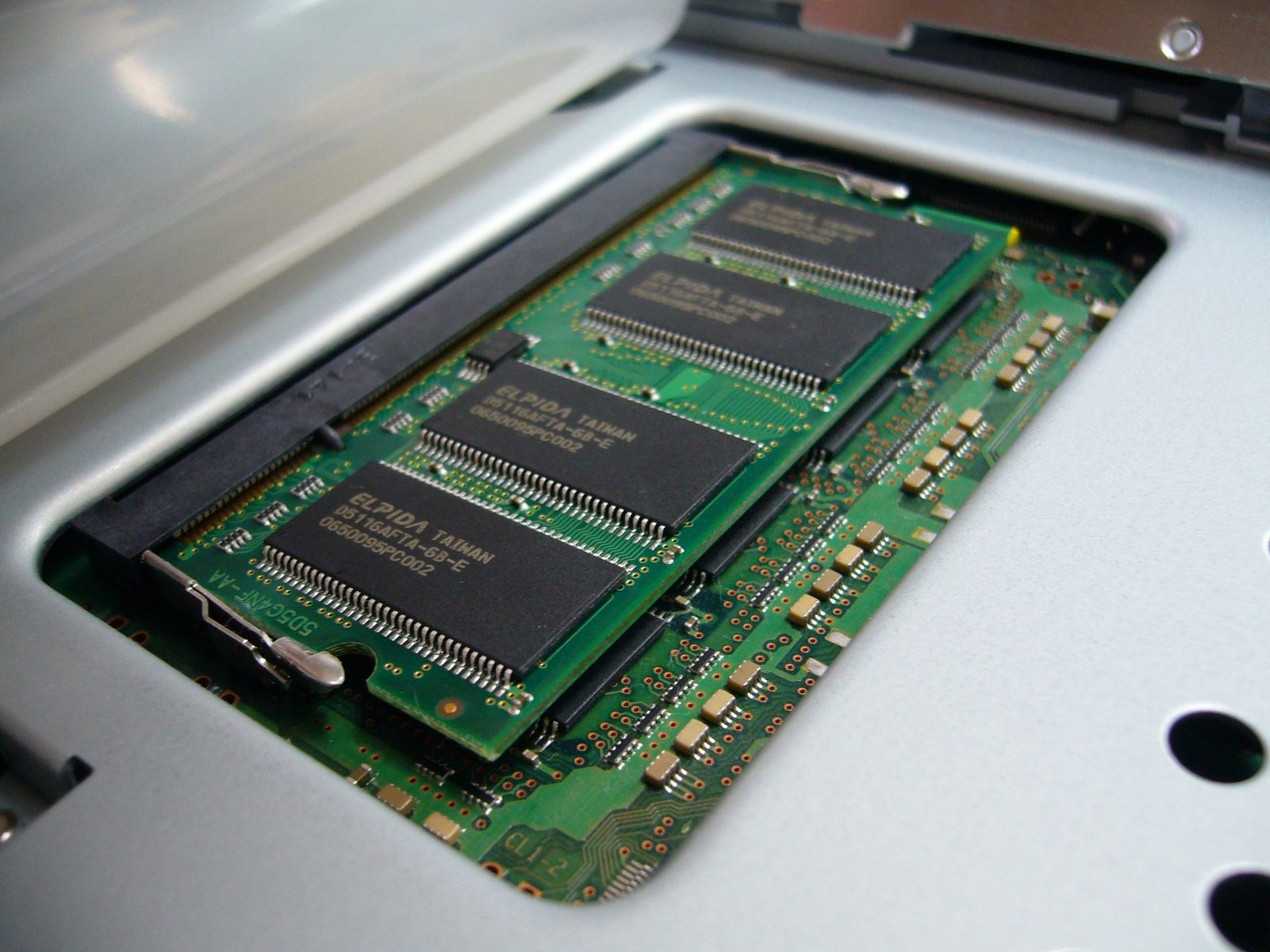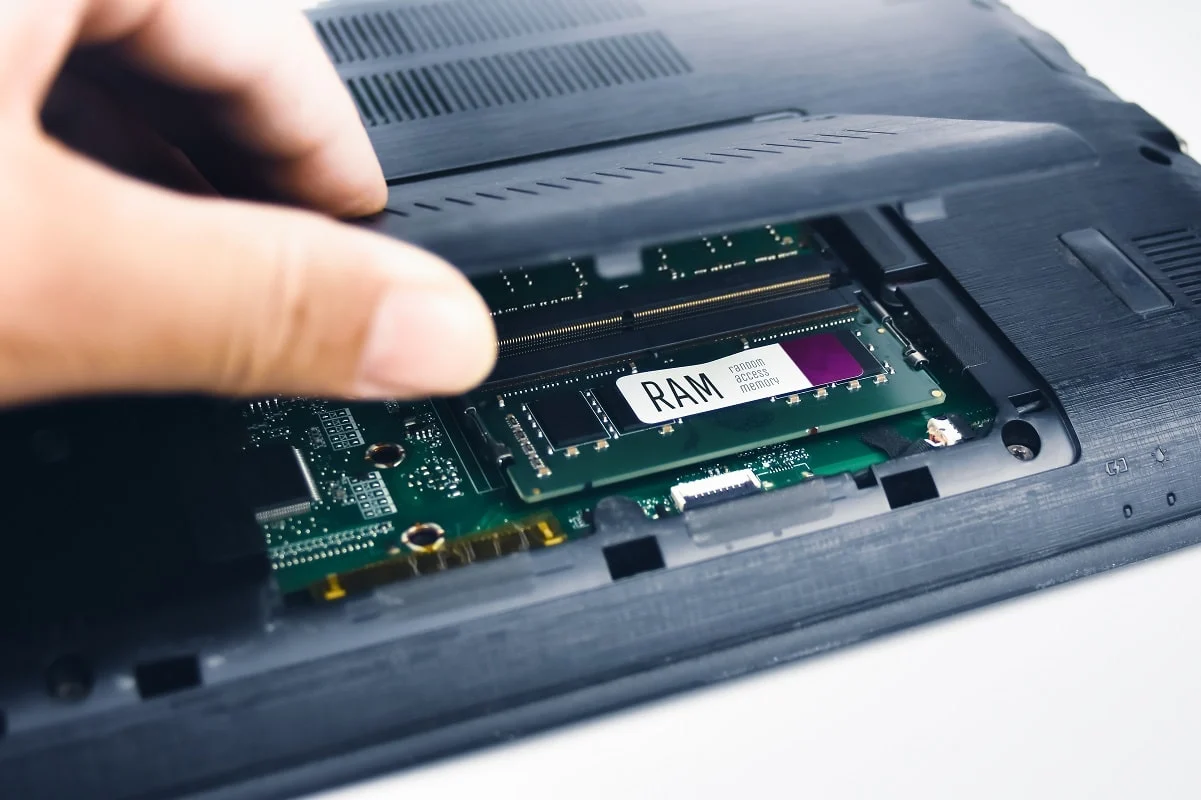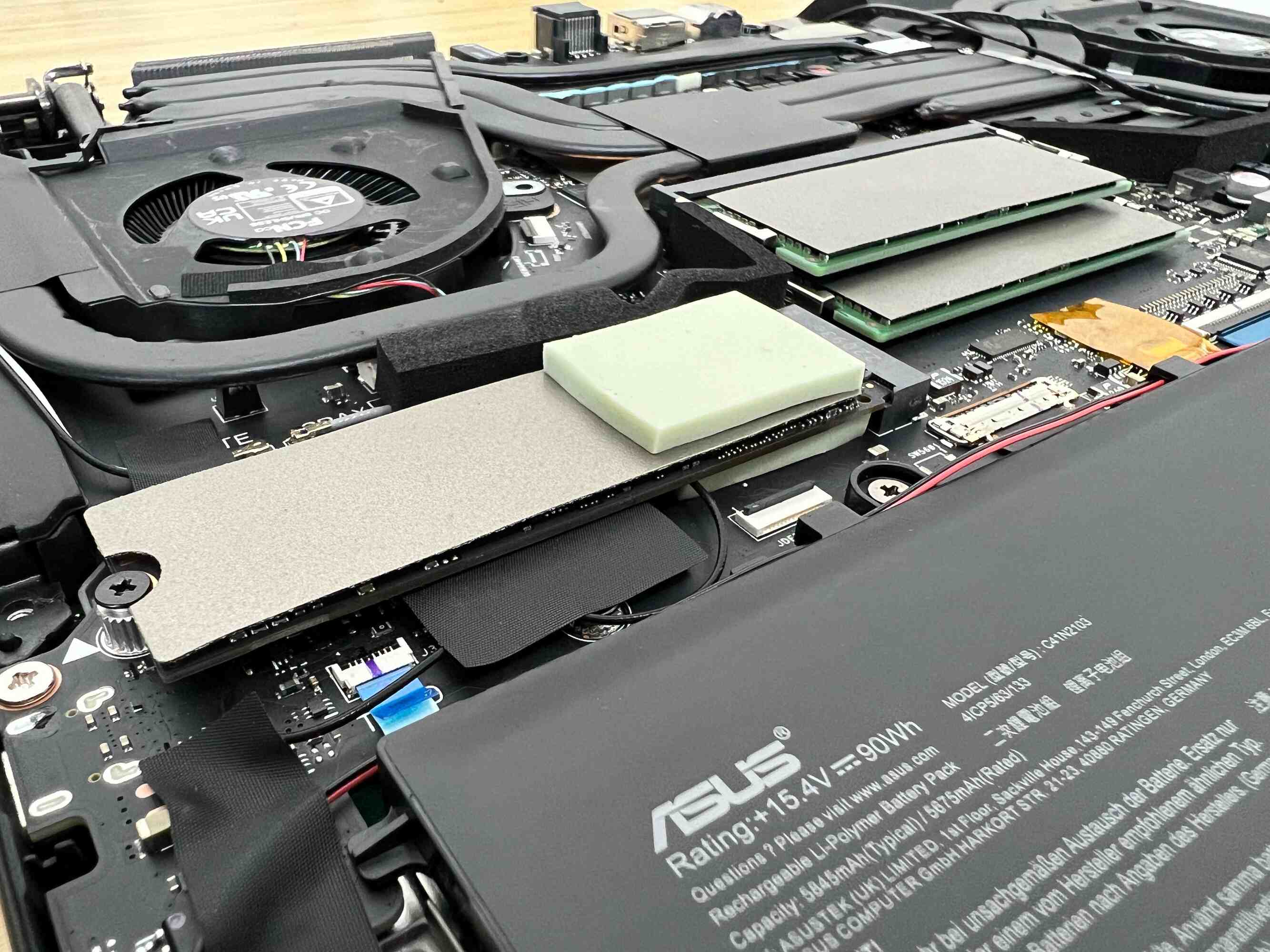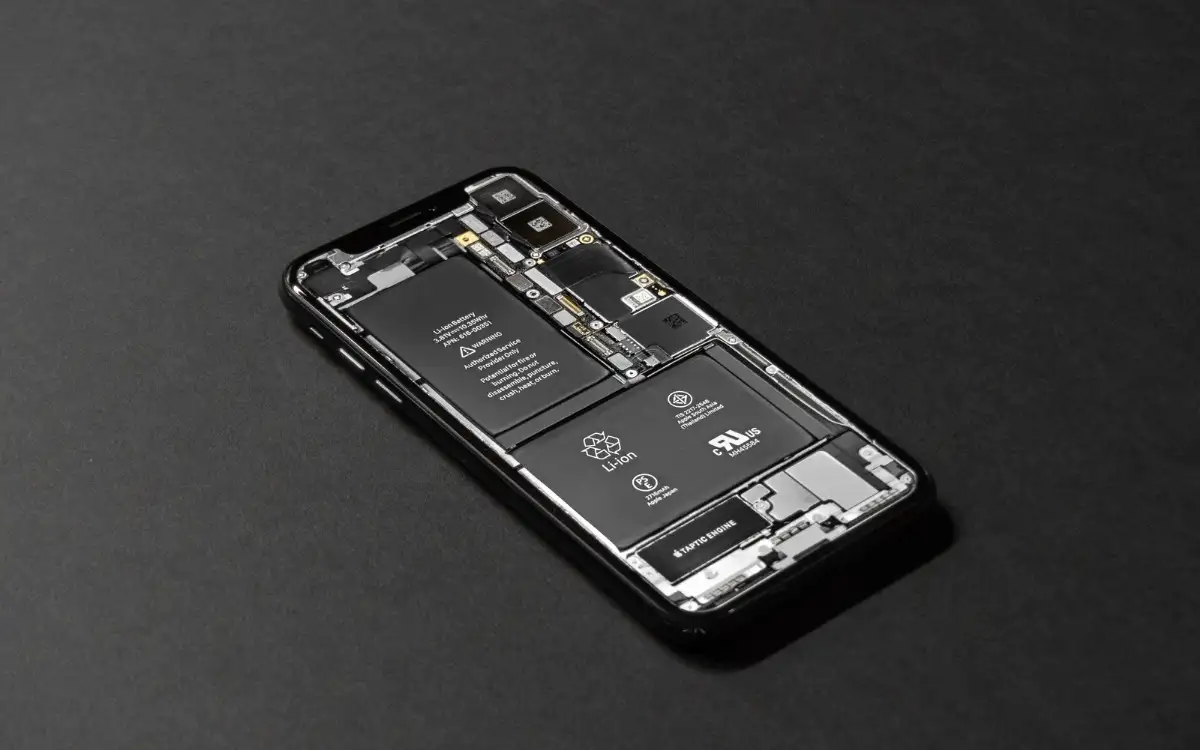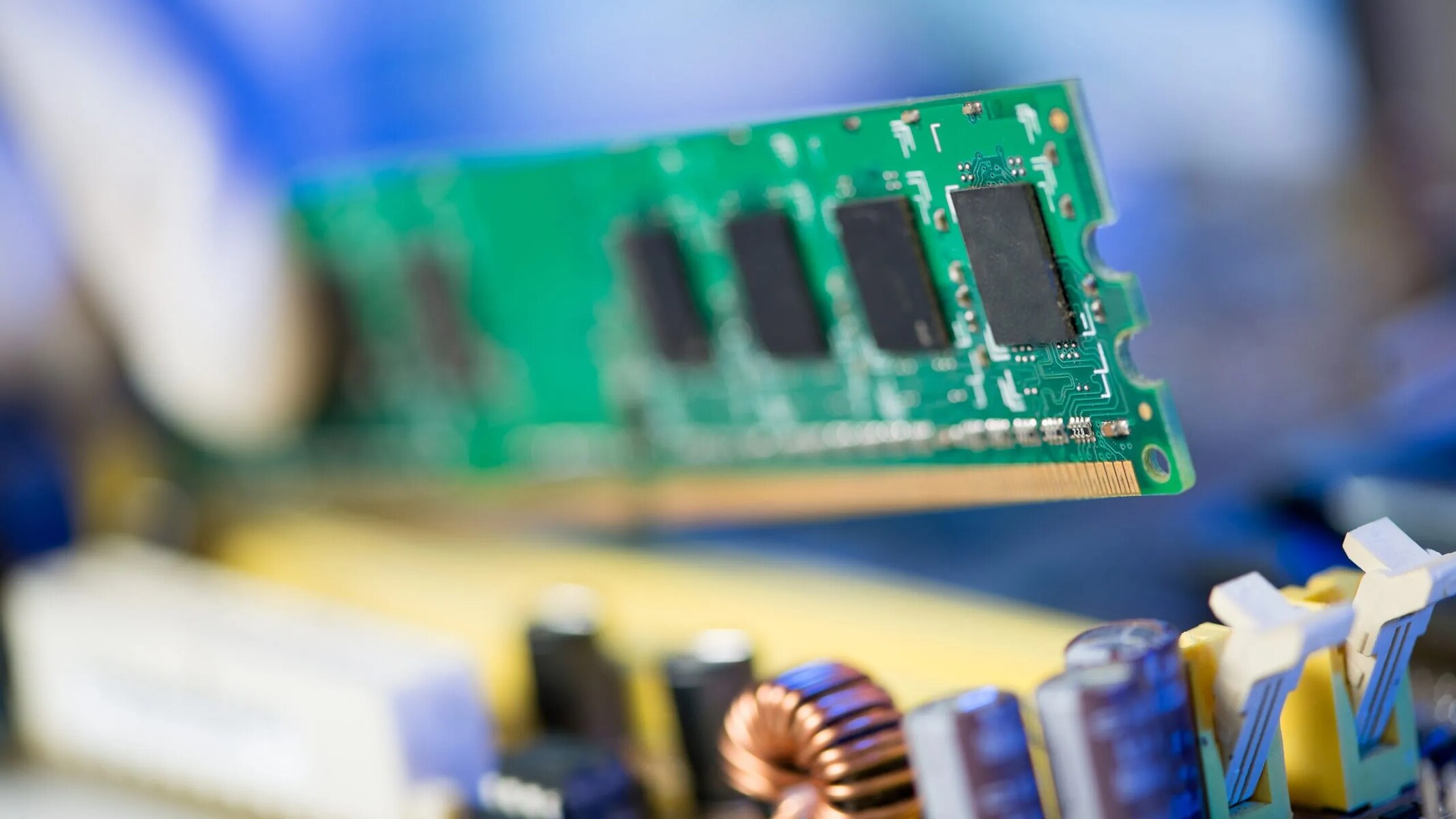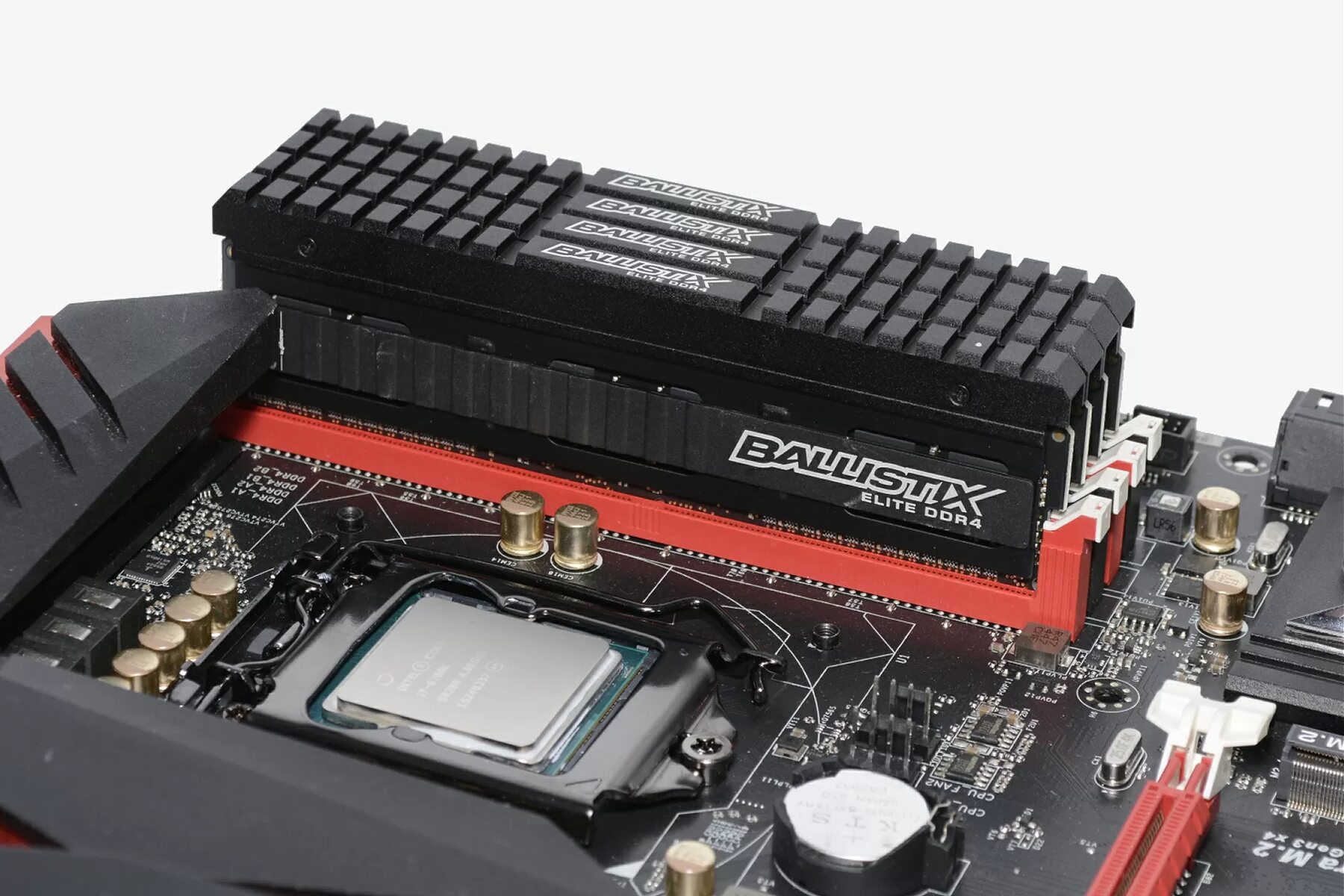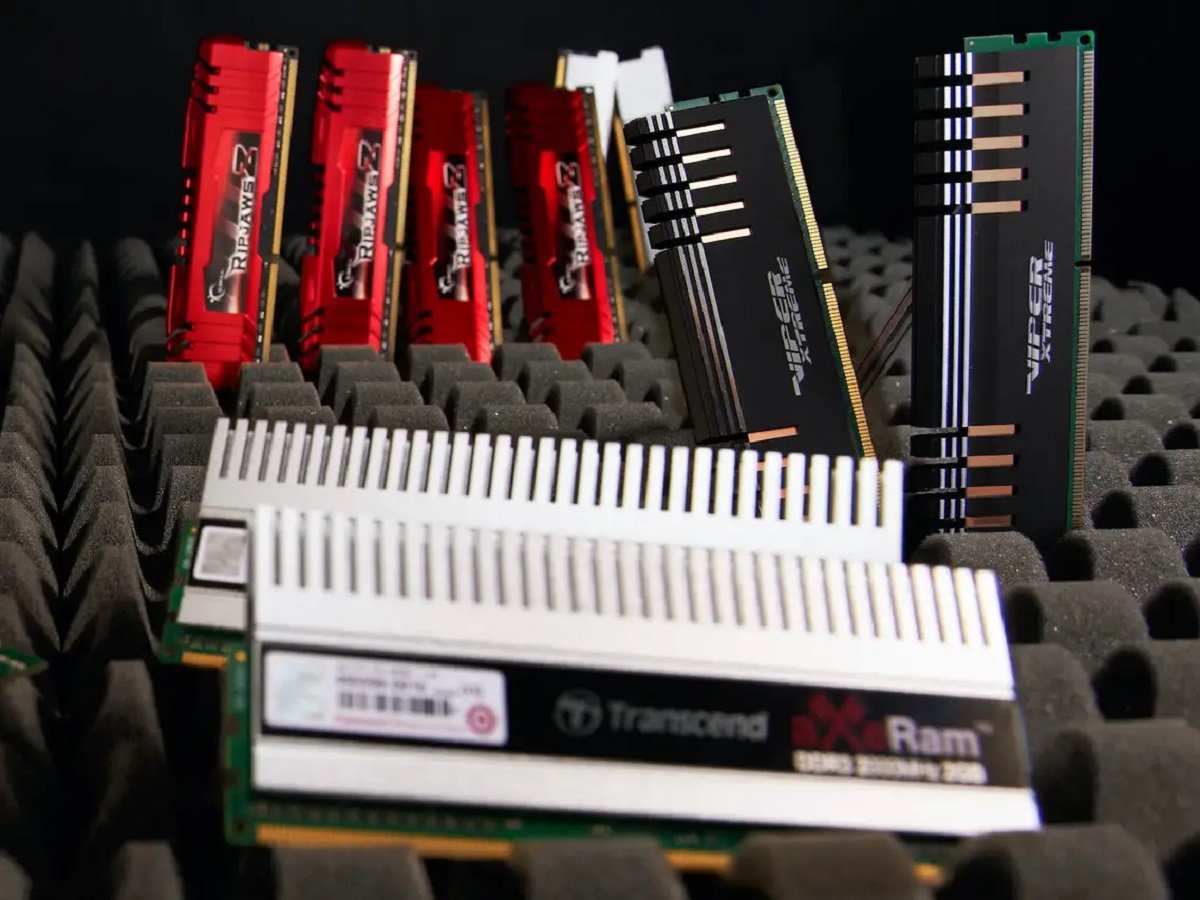Introduction
When it comes to photo editing, having the right amount of RAM (Random Access Memory) is crucial to ensure smooth and efficient performance. RAM plays a vital role in the speed and responsiveness of your computer, particularly when handling resource-intensive tasks like editing high-resolution photos.
RAM is the temporary storage space where your computer loads and processes data while it is actively being used. In the context of photo editing, RAM is essential for quickly accessing and manipulating large image files, applying edits, and rendering changes in real-time.
Without sufficient RAM, photo editing software can face lagging response times, frequent crashes, and overall sluggish performance. This can not only hinder your productivity but also impact the final quality of your edited photos.
In this article, we will delve into the importance of RAM in photo editing and explore the minimum requirements, benefits of having more RAM, factors affecting RAM usage, recommended RAM for different types of photo editing work, tips to optimize RAM usage, and common RAM-related issues faced by photo editors.
Whether you are a professional photographer, a hobbyist, or someone who occasionally edits photos for personal use, understanding the role of RAM in enhancing the editing experience is essential. By knowing how much RAM you need and how to optimize its usage, you can ensure a seamless editing process and achieve the best possible results.
Understanding RAM
RAM (Random Access Memory) is a key component of any computer system, including those used for photo editing. It serves as the temporary storage for data that the computer needs to access quickly. Unlike a hard drive, which stores information permanently, RAM provides fast and immediate access to data while the computer is powered on.
When you open a photo editing software or load a large image file, the data is transferred from the hard drive to the RAM. This allows the computer to quickly retrieve and manipulate the data without the delays associated with accessing files directly from the hard drive. The more RAM your computer has, the more data it can store and access simultaneously.
RAM is like your computer’s working memory. It allows your computer to handle multiple tasks simultaneously and keep frequently used data readily available. When you edit photos, the software needs to keep the image files, adjustment layers, filters, and other editing elements accessible in the RAM to provide real-time responsiveness.
It’s important to note that RAM is separate from your computer’s permanent storage, such as the hard drive or solid-state drive (SSD). While the hard drive stores files and programs even after the computer is turned off, RAM is volatile memory that gets emptied when the computer is shut down. This is why saving your work is crucial to prevent data loss.
The capacity of RAM is typically measured in gigabytes (GB). Common RAM sizes for photo editing computers range from 8GB to 32GB or even higher for professional-grade systems. The amount of RAM you need depends on a variety of factors, such as the complexity of your editing tasks, the size of the image files you work with, and the specific software you use.
Understanding the role of RAM in photo editing is important for optimizing your computer’s performance. In the following sections, we will explore the minimum RAM requirements for photo editing, the benefits of having more RAM, and various factors that can affect RAM usage in the editing process.
Minimum RAM Requirements for Photo Editing
When it comes to determining the minimum RAM requirements for photo editing, there is no one-size-fits-all answer. The specific needs can vary depending on factors such as the complexity of your editing workflow, the size and resolution of the images you work with, and the photo editing software you use.
For basic photo editing tasks like cropping, resizing, and making minor adjustments, a computer with 8GB of RAM should suffice. This amount of RAM allows you to handle small to medium-sized image files without experiencing significant slowdowns or performance issues.
However, if you frequently work with larger image files, HDR photography, or utilize advanced editing techniques that involve multiple layers, filters, or complex adjustments, it is recommended to have at least 16GB or 32GB of RAM. This extra capacity will provide a smoother editing experience and allow your computer to handle the increased demands of these intensive tasks.
It’s important to note that photo editing software is not the only application running on your computer. Other background processes, such as antivirus software, system updates, and additional applications, can also use up a portion of your available RAM. Therefore, it is advisable to have some extra headroom to accommodate these background processes without impacting the performance of your photo editing software.
If you are unsure about the specific RAM requirements for your photo editing needs, consult the documentation or system requirements provided by the software manufacturer. They often provide recommendations for the minimum and recommended RAM sizes suitable for optimal performance with their software.
Keep in mind that the minimum RAM requirements mentioned here are baseline recommendations. For professional photographers or those dealing with more complex editing tasks, investing in higher amounts of RAM, such as 64GB or more, might be necessary to ensure smooth and efficient performance.
Ultimately, having sufficient RAM is essential in preventing system slowdowns, crashes, and frustrating user experiences while editing photos. In the next section, we will explore the various benefits of having more RAM for photo editing.
Benefits of More RAM for Photo Editing
Investing in more RAM for photo editing can yield several significant benefits that enhance your overall editing experience and productivity.
1. Faster Editing Speed: With more RAM, your computer can store a larger amount of data in its memory, allowing for quicker access and processing. This translates into faster loading times, smoother brush strokes, and seamless adjustment application. You can breeze through your editing tasks without frustrating delays or lagging response times.
2. Improved Multitasking: Photo editing often involves working with multiple images, editing tools, and adjustment layers simultaneously. Having more RAM enables your computer to handle these tasks efficiently, making it easier to switch between images, manipulate different elements, and apply edits in real-time without experiencing any sluggishness or performance hiccups.
3. Enhanced Performance with Resource-Intensive Editing: Advanced editing techniques like working with high-resolution images, using complex filters, or stacking multiple adjustment layers can be resource-intensive. More RAM allows your computer to smoothly handle these tasks, ensuring that you can execute creative edits without any glitches or limitations.
4. Increased Stability: Inadequate RAM can cause photo editing software to crash or freeze when it exceeds its memory limits. With more RAM, you reduce the chances of encountering such issues, as the software can comfortably utilize the available memory, resulting in a stable and reliable editing experience.
5. Future-Proofing: Investing in more RAM ensures that your computer is prepared to handle the evolving demands of photo editing software and technologies. As software updates and new features become more demanding, having ample RAM will allow you to adapt and ensure smooth performance without the need for frequent hardware upgrades.
It’s important to keep in mind that while more RAM offers benefits, it’s not the only factor that contributes to overall system performance. The speed of your computer’s processor, graphics card, and storage solutions also play a role. Therefore, it’s advisable to have a balanced system configuration that aligns with your photo editing requirements.
In the next section, we will explore the various factors that can affect RAM usage in photo editing and provide recommendations for different types of photo editing work.
Factors Affecting RAM Usage in Photo Editing
Several factors can influence the amount of RAM used during photo editing, and understanding these factors can help you optimize your RAM usage and ensure smooth performance. Here are some key considerations:
1. Image Size and Resolution: The size and resolution of the images you work with directly impact RAM usage. Larger images with higher resolutions require more RAM to load and process. Editing multiple high-resolution images simultaneously will also increase the RAM demands. Keep in mind that RAW files tend to be larger and may require more RAM compared to JPEG formats.
2. Editing Complexity: The complexity of your editing workflow, such as the use of layers, masks, blending modes, and complex adjustment techniques, can put additional strain on your RAM. Each layer and adjustment you add to an image consumes more RAM. Therefore, the more intricate your editing process, the more RAM you will need to ensure smooth performance.
3. Simultaneous Applications: Your RAM usage is not limited to the photo editing software alone. Other applications running in the background, such as web browsers, antivirus software, or other photo management tools, also consume RAM. Having additional free RAM allows for smooth multitasking and prevents your system from becoming overwhelmed.
4. System Memory Management: The efficiency of your operating system’s memory management affects how well your computer utilizes RAM. Older operating systems or misconfigured memory settings may not optimize RAM usage effectively. Ensuring that your operating system is up to date and properly configured can help maximize the benefits of your available RAM.
5. Software Optimization: Photo editing software varies in their RAM usage optimization. Some applications are more efficient in managing memory and reducing the strain on RAM, while others may be more resource-intensive. Stay updated with the latest software versions, as developers often make improvements to optimize performance and reduce RAM usage.
Considering these factors, it is evident that the RAM requirements for photo editing can fluctuate based on the specific tasks and conditions. Therefore, it’s essential to evaluate your editing workflow and system resources to determine the optimal amount of RAM needed for your specific needs.
In the next section, we will provide recommended RAM guidelines for different types of photo editing work to help you make an informed decision.
Recommended RAM for Different Types of Photo Editing Work
When it comes to determining the recommended RAM for different types of photo editing work, there are varying factors to consider, such as the complexity of your editing tasks and the size of the image files you typically work with. Here are some general guidelines:
1. Casual and Basic Editing: If you engage in casual photo editing and primarily perform simple tasks like cropping, resizing, and making minor adjustments, a computer with 8GB of RAM should be sufficient. This amount of RAM allows for smooth performance when working with small to medium-sized image files.
2. Intermediate Editing: For those who engage in intermediate-level photo editing, involving tasks like retouching, color correction, and layering, it is recommended to have at least 16GB of RAM. This additional capacity allows for efficient handling of larger image files and more complex editing techniques.
3. Advanced Editing and Professional Work: If you’re a professional photographer or involved in advanced editing tasks like high-end retouching, graphic design, or working with large RAW files, having 32GB or more of RAM is advised. This ample amount of RAM ensures that your computer can handle the resource-intensive demands of such tasks without any performance bottlenecks.
It’s important to note that these recommendations are general guidelines and can vary depending on the specific software and workflow you use. Some photo editing software, like Adobe Photoshop, has minimum RAM requirements listed on their website. It’s advisable to check the software manufacturer’s recommendations to ensure optimal performance.
Furthermore, if you frequently engage in multitasking or use other memory-hungry applications alongside your photo editing software, it’s recommended to have additional RAM to accommodate those tasks without compromising the performance of your editing workflow.
Keep in mind that RAM is just one aspect of a well-rounded system configuration for photo editing. Consider other hardware components like a powerful CPU (Central Processing Unit), a dedicated GPU (Graphics Processing Unit), and fast storage solutions (SSD or NVMe drives) to achieve an optimal editing experience.
By choosing the recommended amount of RAM based on your editing needs, you can ensure that your computer performs optimally and provides a seamless and efficient editing process.
In the next section, we will share some useful tips to optimize RAM usage for photo editing.
Tips to Optimize RAM Usage for Photo Editing
Optimizing RAM usage is crucial to ensure smooth performance and efficient photo editing workflows. Here are some tips to help you make the most out of your available RAM:
1. Close Unnecessary Applications: Before starting your photo editing session, close any unnecessary applications running in the background. This frees up valuable RAM resources that can be utilized by your photo editing software and improves overall performance.
2. Reduce Undo/History States: Some photo editing software allows you to limit the number of undo or history states stored in RAM. Decreasing the number of states can help conserve RAM usage without sacrificing editing functionality.
3. Optimize Scratch Disk Settings: Configure your photo editing software to utilize your computer’s storage drive as a scratch disk. This offloads some of the memory-intensive tasks to the hard drive, reducing the strain on RAM. Ensure that your scratch disk has sufficient free space for optimal performance.
4. Resize and Compress Images: If you are working with large image files, consider resizing and compressing them without affecting the visual quality. By reducing the file size, you can minimize the RAM usage required to load and process these images.
5. Utilize Smart Previews: Some photo editing software, like Adobe Lightroom, offers the option to work with smart previews. These are reduced-resolution versions of your images that take up less RAM while allowing you to perform editing tasks. Once you are ready to export the final images, the software applies the edits to the original high-resolution files.
6. Disable Resource-Intensive Features: Disable any resource-intensive features or unnecessary visual effects in your photo editing software. This can include things like animated previews, real-time image previews, or GPU acceleration, which can consume additional RAM resources.
7. Optimize System Settings: Ensure that your computer’s operating system is optimized for performance. This includes keeping your system and software updated, managing startup programs, and using efficient power settings to prioritize performance over power saving.
8. Upgrade Your Hardware: If you find that your current RAM capacity is frequently maxed out and causing performance issues, consider upgrading the RAM modules in your computer. Adding more RAM can significantly improve performance and provide you with extra headroom for handling resource-intensive editing tasks.
By implementing these optimization tips, you can effectively manage and optimize your RAM usage for photo editing. Utilizing the available resources efficiently not only enhances the overall performance of your editing software but also improves your productivity and workflow.
In the next section, we will address some common RAM-related issues faced by photo editors and provide potential solutions for them.
Common RAM Related Issues and Solutions for Photo Editing
As a photo editor, you may encounter several common RAM-related issues that can affect your editing experience. Here are a few of these issues and some potential solutions:
1. Lagging or Slow Performance: If you experience lagging or slow performance while editing photos, it could be a sign of insufficient RAM. To resolve this issue, consider upgrading your RAM to a higher capacity that meets the demands of your editing tasks. Additionally, make sure to close any unnecessary applications running in the background and optimize your editing software’s settings to minimize RAM usage.
2. Frequent Crashes or Out of Memory Errors: If your photo editing software crashes frequently or displays “out of memory” errors, it indicates that your RAM is being overwhelmed. Increase your RAM capacity if possible. Alternatively, you can try adjusting the scratch disk settings in your software to utilize the computer’s storage drive. Ensuring that you have enough free storage space on your scratch disk can help alleviate the strain on RAM.
3. Inefficient Multitasking: If you struggle to perform tasks simultaneously while editing, it may be due to limited RAM resources. To resolve this issue, close unnecessary applications and allocate more RAM to your editing software. Adjusting the priority settings in your operating system to prioritize the editing software can also improve multitasking efficiency.
4. Inability to Handle Large Image Files: If you encounter difficulties when working with large image files, such as slow loading times or unresponsive editing tools, it is likely due to insufficient RAM. Upgrade your RAM to accommodate the larger file sizes or try resizing and compressing the images to reduce the RAM usage. Additionally, optimizing the scratch disk settings and using smart previews can help manage large image files more effectively.
5. Software Compatibility Issues: Some photo editing software may have compatibility issues with certain RAM configurations or operating systems. In such cases, updating your software to the latest version may resolve the problem. If the issue persists, consider contacting the software manufacturer’s support team for further assistance.
6. Inadequate System Resources: Insufficient RAM is sometimes accompanied by other hardware limitations, such as a slow CPU or insufficient graphics card. Ensure that your overall system configuration meets the recommended specifications for your photo editing software. Upgrading these components alongside RAM, if necessary, can help alleviate performance issues and boost your overall editing experience.
By addressing these common RAM-related issues and implementing the suggested solutions, you can enhance the performance of your photo editing software and optimize your workflow. It’s important to regularly assess your system’s resources and make appropriate upgrades or adjustments to ensure a smooth and efficient editing process.
In the final section, we will summarize the key points discussed in this article and provide a concluding statement.
Conclusion
RAM plays a vital role in ensuring a smooth and efficient photo editing experience. With the right amount of RAM, you can enjoy faster editing speeds, improved multitasking capabilities, and enhanced stability while working with large image files and complex editing techniques. By understanding the factors that affect RAM usage and optimizing its utilization, you can maximize your computer’s performance and productivity.
In this article, we explored the importance of RAM in photo editing and discussed the minimum requirements for different levels of editing tasks. We also examined the benefits of having more RAM, such as faster editing speeds, improved multitasking, and increased stability.
Factors such as image size, editing complexity, simultaneous applications, system memory management, and software optimization can impact the amount of RAM required for photo editing. It is important to consider these factors when determining the optimal RAM capacity for your specific needs.
We provided recommendations for the recommended amount of RAM based on different types of photo editing work, from casual and basic editing to advanced and professional work. We also shared tips to optimize RAM usage, including closing unnecessary applications, reducing undo/history states, and resizing/compressing images.
Additionally, we discussed common RAM-related issues faced by photo editors, such as slow performance, crashes, and inefficient multitasking, and provided potential solutions to resolve these issues.
Remember that RAM is just one component of a well-rounded system configuration for photo editing. It’s important to consider other hardware components like CPU, GPU, and storage solutions to ensure optimal performance.
By prioritizing and investing in sufficient RAM, optimizing its usage, and maintaining a well-configured system, you can enhance your photo editing workflow, improve productivity, and achieve exceptional results in your editing endeavors.







